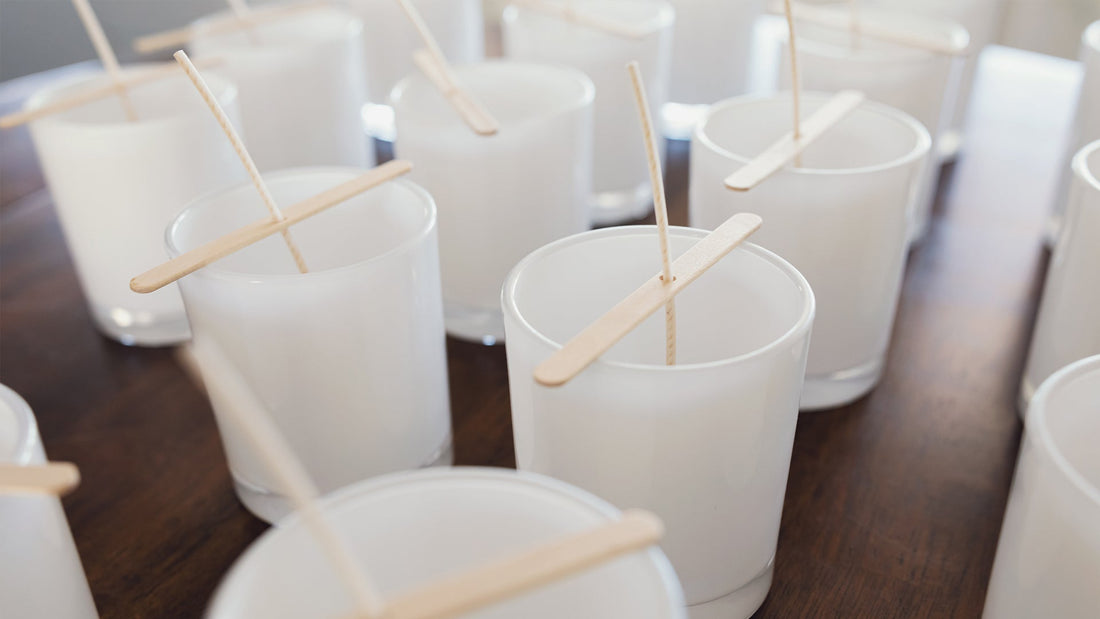
Choosing The Right Size Wick For Your Candle
Share
Candles have long been cherished for their ability to create ambiance, evoke emotions, and provide a sense of tranquility. However, the magic of a perfect candle isn't solely about the wax and fragrance—it also depends on the often underestimated element: the wick. The size of the wick you choose can significantly impact your candle's burn performance, longevity, and overall experience. In this guide, we'll illuminate the art of selecting the right wick size to ensure your candles shine brightly.
1. The Role of the Wick: More Than Just a Flame
Before delving into wick sizes, it's essential to understand the crucial role a wick plays in the candle-burning process. The wick serves as a conduit, drawing melted wax up from the candle's base to the flame's tip, where it vaporizes and combusts. Achieving the right balance between wax consumption and flame size is key to a clean, even burn.
2. Factors Influencing Wick Size Selection
Choosing the perfect wick size is a science that blends both artistry and chemistry. Several factors come into play when determining the ideal wick size for your candle:
Candle Diameter: The diameter of your candle is perhaps the most critical factor. A wick that is too small won't draw up enough wax, leading to a dim flame and potentially causing tunneling (uneven melting). Conversely, a wick that is too large can result in excessive wax consumption, a sooty flame, and potential overheating.
Wax Type: Different waxes (paraffin, soy, beeswax, etc.) have varying densities and melting points. Each wax type requires a wick that can adequately accommodate its unique characteristics.
Fragrance and Additives: If you're using fragrances or additives in your candles, they can affect how the wax behaves during combustion. Some fragrances might require a wick with slightly different burning characteristics.
Container Material: Whether your candle is in a glass jar, metal tin, or any other container can impact heat distribution and airflow, which in turn affect how the wick burns.
Desired Burn Time: The length of time you want your candle to burn for matters. A longer burn time might require a different wick size than a candle meant for shorter, more intimate settings.
3. Wick Size Cheat Sheet
Here's a general guide to help you get started when selecting a wick size based on your candle's diameter:
* Small Diameter (1-2 inches): A small candle will generally require a thinner wick to ensure proper wax consumption without overheating. This could be a wick labeled as "small" or "Votive."
* Medium Diameter (2-3 inches): Opt for a medium-sized wick, often labeled as "medium" or by its numerical size. This is a versatile option that suits many candle types.
* Large Diameter (3 inches or more): Larger candles need thicker wicks to draw up an appropriate amount of wax. Look for wicks labeled as "large" or "pillar."
4. The Importance of Testing
While guidelines can be a great starting point, every candle is unique. Wick size selection is not a one-size-fits-all approach. To achieve the best results, it's crucial to test your chosen wick in a controlled setting before producing a large batch of candles. Conduct burn tests to observe how the wick performs—does it create an even melt pool, is the flame steady, and is there any sooting? Adjust as necessary based on your observations.
5. Consulting Wick Manufacturers
Wick manufacturers often provide valuable recommendations based on their wick's characteristics and your intended candle specifications. Don't hesitate to reach out to them for guidance. Their expertise can help steer you in the right direction.
6. Embracing the Journey
Selecting the right wick size for your candle is both an art and a science. It requires patience, experimentation, and a willingness to learn from your trials. Remember, a candle's wick isn't just a functional component; it's an integral part of the experience you're creating for your customers or yourself. So, embark on this journey with a spirit of curiosity, and let the flickering flame guide you toward candle perfection.
In the end, crafting a candle that burns brightly and beautifully is a labor of love. By understanding the nuances of wick selection and testing, you'll unlock the secret to creating candles that cast a warm and inviting glow, captivating all who bask in their light.
